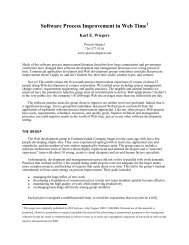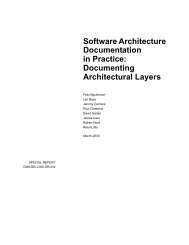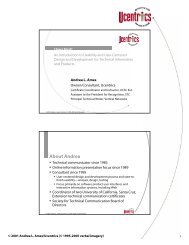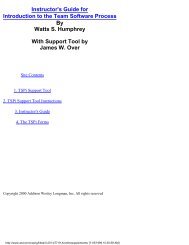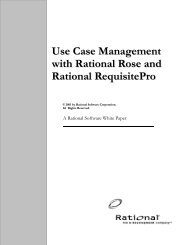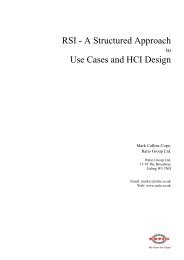Using Data Modeler
Using Data Modeler
Using Data Modeler
You also want an ePaper? Increase the reach of your titles
YUMPU automatically turns print PDFs into web optimized ePapers that Google loves.
Transforming the Object Model to the <strong>Data</strong> ModelAfter customizing your object model to map to a data model, you can transform yourobject model to generate a data model that reflects the mapping you specified. Youtransform the object model to a data model for various reasons, but regardless of thereason the process is the same.Why TransformYou can transform an object model to generate a new DBMS database, or tosynchronize the object model and the data model, sharing information with datadesigners.Transformation is a necessary step in generating a new database that supports theapplication. When you transform the object model, a data model is generated. Thisdata model can then be forward engineered to create a DBMS database.Also, when you transform the object model to a data model you are synchronizing themodels, because each of the generated elements in the data model map to one or moreelements in the object model. This synchronization creates consistency in the systemand allows for the sharing of information between the application designers and thedatabase designers through the object model.The database designer is dependent on the object model of the application, because itis through this structure that the data is accessed. Therefore the transformation of theobject model to the data model can be the means of communicating applicationchanges that may affect the DBMS database. The application designer can shareinformation, especially changes, by transforming the changed object model to a datamodel. The database designer can review the changes and see the impact suchchanges would have on the DBMS database without updating the database. You canshare the object model changes with the database designer by using the <strong>Data</strong> <strong>Modeler</strong>Transform Object Model to <strong>Data</strong> Model feature.The Transformation ProcessAll the object model elements mentioned in the mapping section of this chaptertransform to the data model items they are mapped to, except components andoperations.Even though components map to a database, components themselves do nottransform to the data model. In fact, in place of a component, you must create a newdatabase before transforming your object model to a data model. When you create anew database, you can specify a database name and assign the database target to asupported DBMS or the ANSI SQL 92 standard. Refer to Chapter 4 Physical <strong>Data</strong>Modeling for information on creating a new database.24 Chapter 3 - Logical <strong>Data</strong> Modeling



